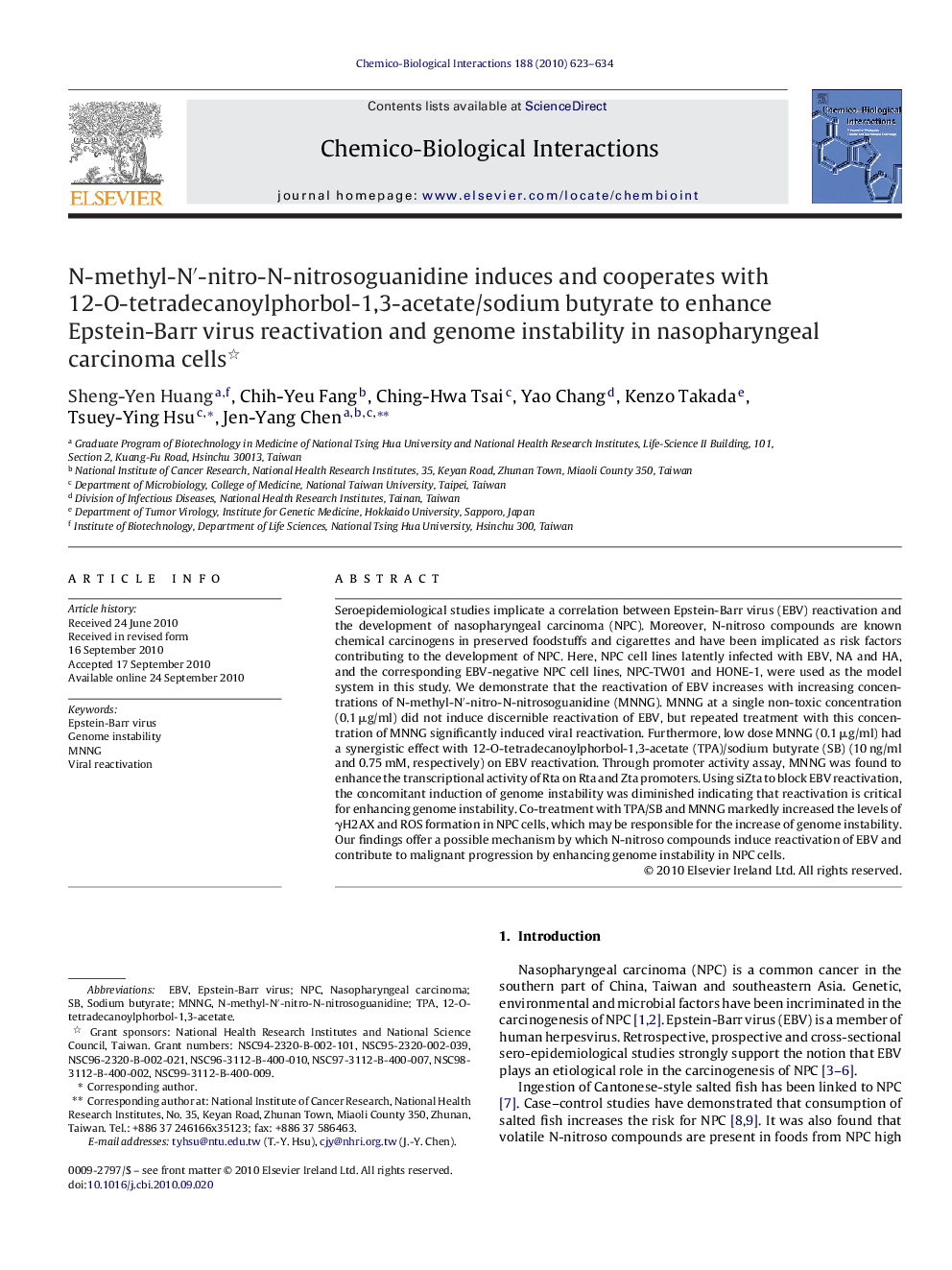| Article ID | Journal | Published Year | Pages | File Type |
|---|---|---|---|---|
| 2580972 | Chemico-Biological Interactions | 2010 | 12 Pages |
Seroepidemiological studies implicate a correlation between Epstein-Barr virus (EBV) reactivation and the development of nasopharyngeal carcinoma (NPC). Moreover, N-nitroso compounds are known chemical carcinogens in preserved foodstuffs and cigarettes and have been implicated as risk factors contributing to the development of NPC. Here, NPC cell lines latently infected with EBV, NA and HA, and the corresponding EBV-negative NPC cell lines, NPC-TW01 and HONE-1, were used as the model system in this study. We demonstrate that the reactivation of EBV increases with increasing concentrations of N-methyl-N′-nitro-N-nitrosoguanidine (MNNG). MNNG at a single non-toxic concentration (0.1 μg/ml) did not induce discernible reactivation of EBV, but repeated treatment with this concentration of MNNG significantly induced viral reactivation. Furthermore, low dose MNNG (0.1 μg/ml) had a synergistic effect with 12-O-tetradecanoylphorbol-1,3-acetate (TPA)/sodium butyrate (SB) (10 ng/ml and 0.75 mM, respectively) on EBV reactivation. Through promoter activity assay, MNNG was found to enhance the transcriptional activity of Rta on Rta and Zta promoters. Using siZta to block EBV reactivation, the concomitant induction of genome instability was diminished indicating that reactivation is critical for enhancing genome instability. Co-treatment with TPA/SB and MNNG markedly increased the levels of γH2AX and ROS formation in NPC cells, which may be responsible for the increase of genome instability. Our findings offer a possible mechanism by which N-nitroso compounds induce reactivation of EBV and contribute to malignant progression by enhancing genome instability in NPC cells.
